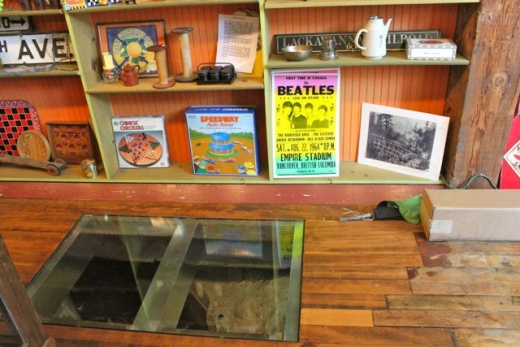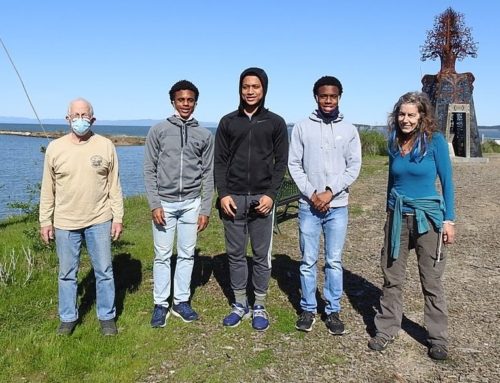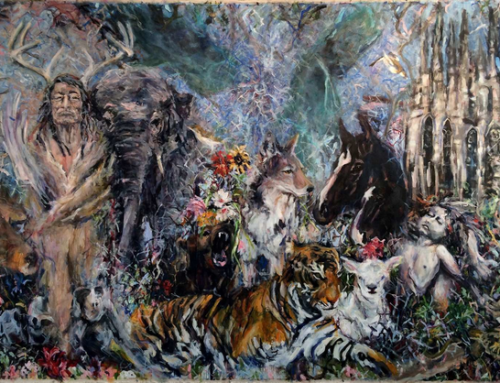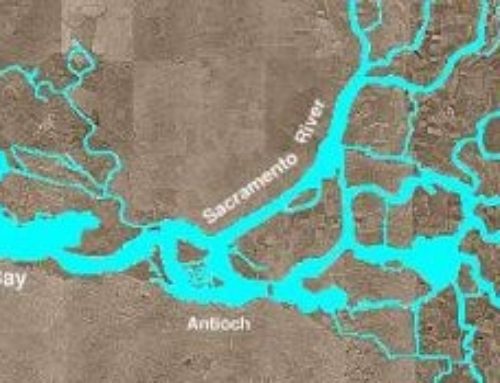-
Where is the water running through your own watershed? For many of us living in urban areas of California, that question is not only hard to answer, but not even a question that ever crosses our minds. In many urban zones, the local potable water supply (used for both potable and nonpotable uses) are not coming from the local watershed. Even if individuals know what their actual water source is, which is still rare, they know very little about their own watersheds. Without awareness, it’s much more difficult to tie our own behavior to the health of our watersheds, even for the ecosystem-minded.
The largest impact is on the stormwater front, as we urbanites allow vast amounts of rainwater falling on our residential or commercial properties to run off the property without being captured for use or infioltrated, leading to our #1 water quality issue in the U.S. – stormwater polluting our local waterways.
While daylighting an entire stream can be a huge legal project with like large costs to it for a city or community group, showing a small section of that stream is very eye-opening. Traveling recently through the town of Dunsmuir in Northern CA, I stopped at Dogwood Diner and was struck by the loud sound of running water inside the building. My conservationist bones were rattled and I went in search of the source of the sound, expecting to see the restaurant dumping used water at a high rate. Instead, I found the sound coming from a stream daylighted in several places in the floor of their building of their adjascent clothing store.
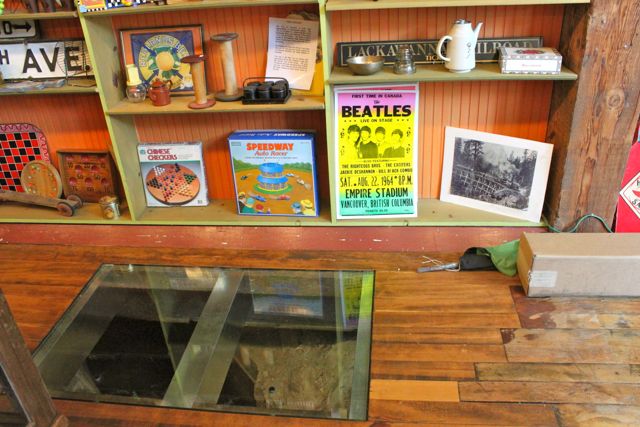
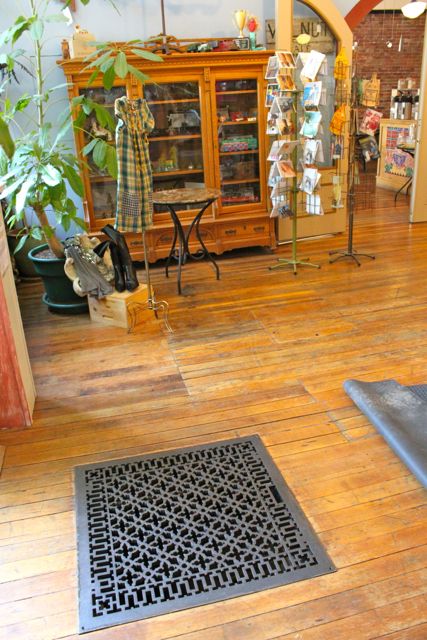
On closer look, not only had they opened up the floor of the building to show the stream running through its rocky streambed below, but they took the opportunity to really daylight the stream by adding lights below for a cleaer view of the flowing water.
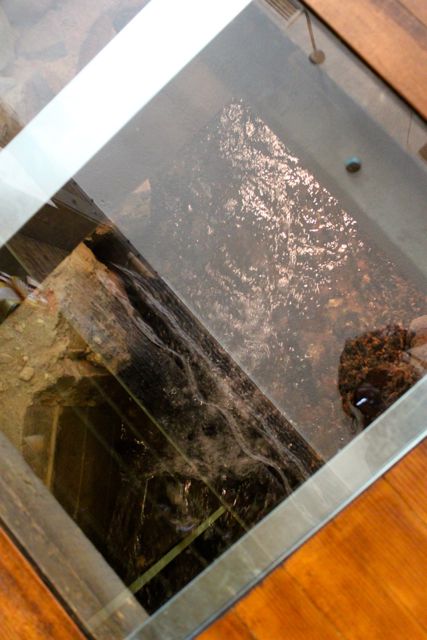
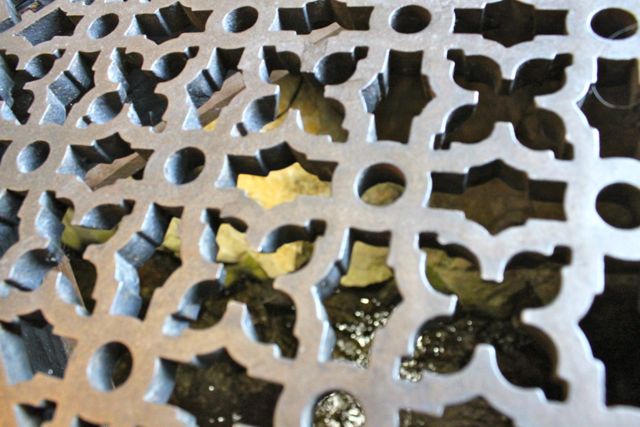
The wonderful woman working in the store explained to me that the owner had really wanted to encourage store visitors to become more aware of how water is moving through Dunsmuir and added this educational information. She also pointed out several small holes in the floor which cools the store in the summer, like a swamp cooler. In the winter they just plug the holes up to maintain warmth.
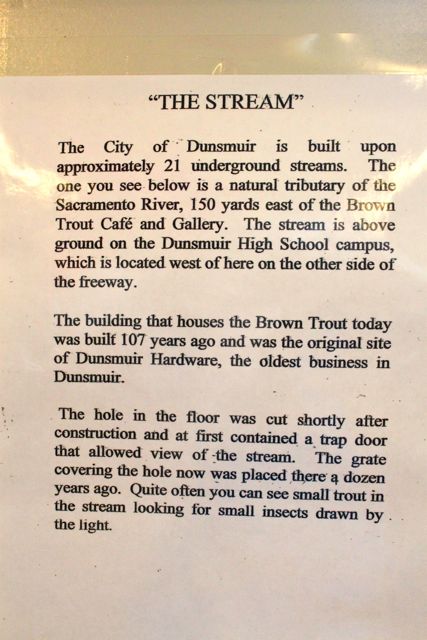
The also removed the old toilet, which used to dump directly into the stream, now using the space for storage and a backdrop for the bands that play there periodically!
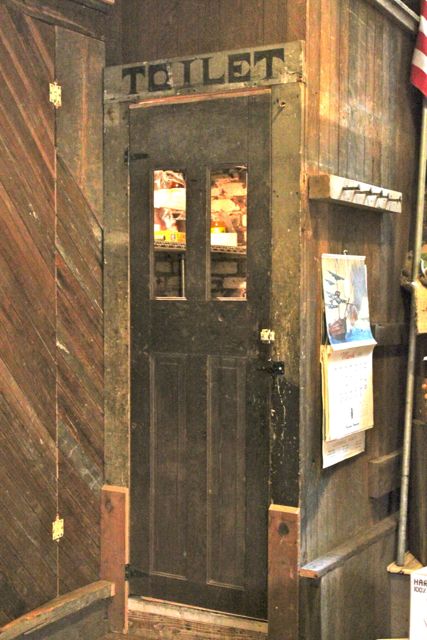
This is a great design idea for restaurants, bars, even a home. Find out if you are over a stream and what it would take to point that out by exposing it on the building interior as a beautiful design addition.
If you’d likle to learn more about your own watershed by seeing a watershed map, first you can try a google search for your county’s name and “watershed map”. If nothing appears, try looking on your water provider’s web page to see if they have local watershed information.
My own water provider, East Bay Municipal Utilities District (EBMUD), which draws it’s water from the Mokelumne River, does not provide maps of our watershed, but the Oakland Museum does! In fact, they provide beautifully clear and detailed watershed maps for all watershed in Oakland, San Francisco, Richmond, Berkeley, Daly City, Hayward, San Leandro, San Mateo, Dublin, Pleasanton, Freemont, Baylands, South San Francisco, Palo Alto, Milpitas, North and South San Jose, San Jose, West Santa Clara, Morgan Hill and Gilroy. It’s easy to see where the creeks are daylighted (above ground) and where they are culverted through a piping system (underground).
Another source for very general maps is the US EPA, which has a watershed mapping tool, that provides just the general outlines of the watershed on a larger area map.
Looking at my own watershed map a few years back informed me as to why a small piece of curly willow that came in a flower arrangement which I planted in my backyard only 4 years ago has turned into a 40′ tree with nearly no watering. Derby Creek runs right under my house, and while it may be in a culvert, some of that water from my the Derby Creek watershed is influencing what I can grow. Good to know!


